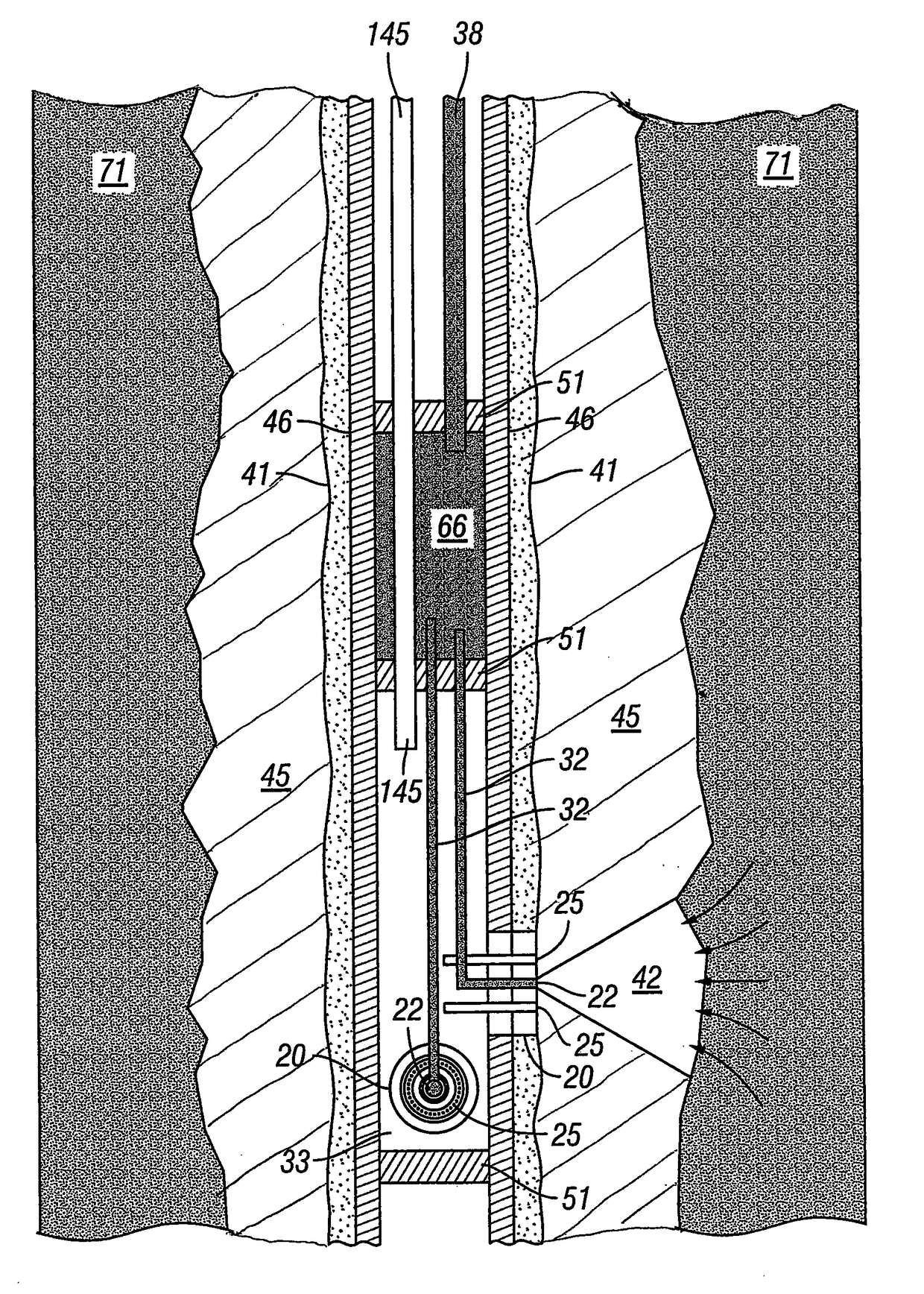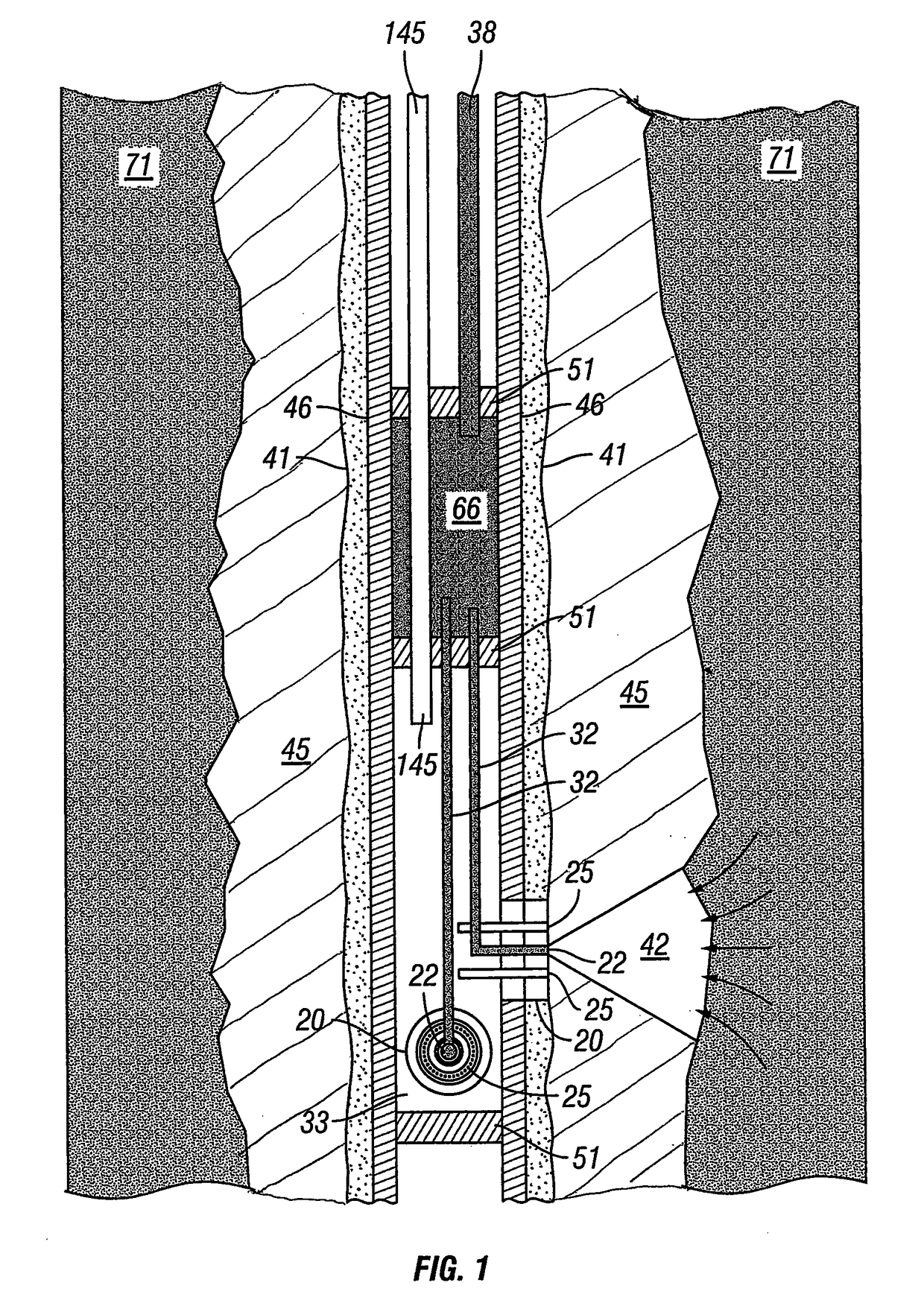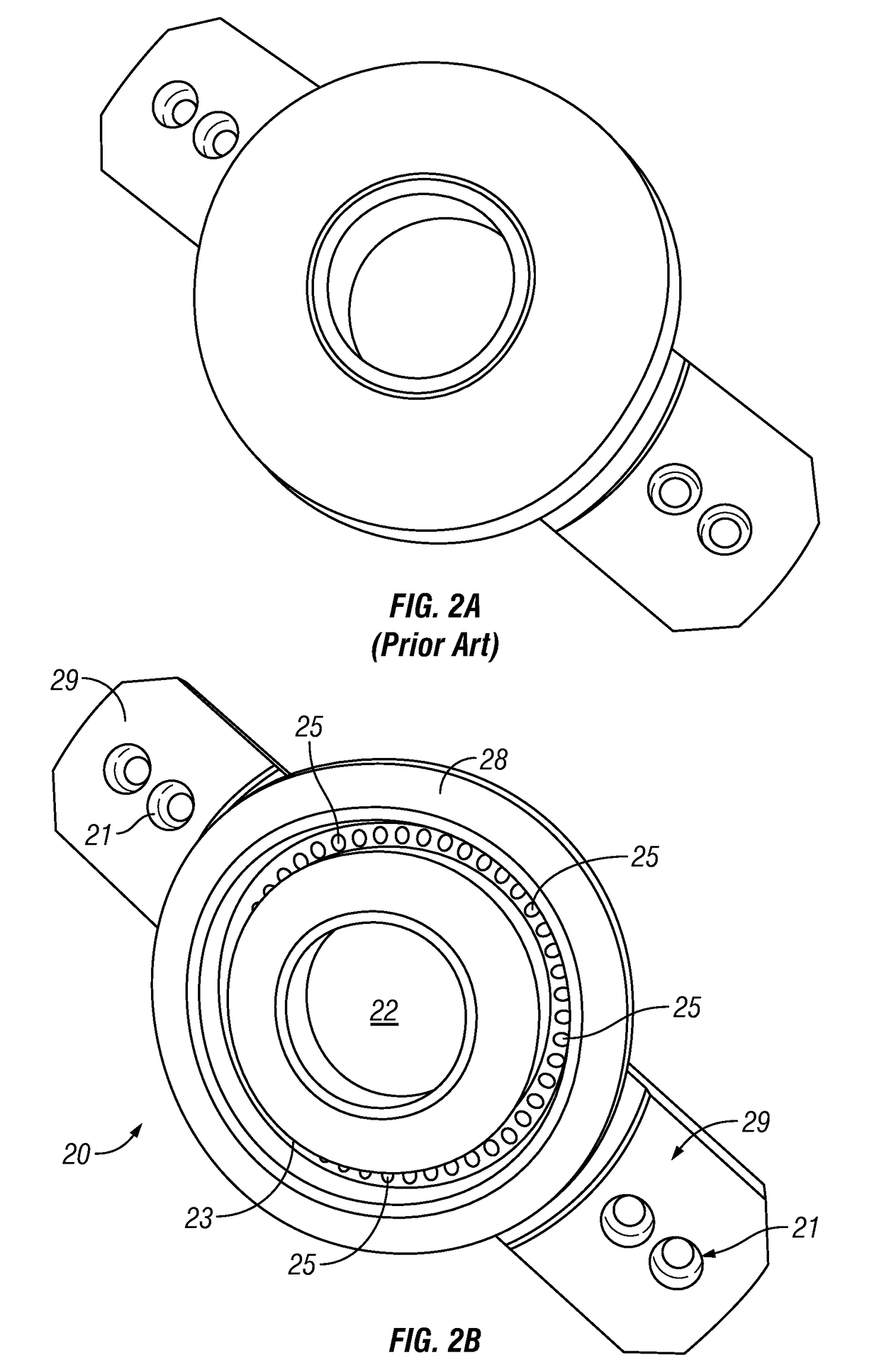Methods, apparatus and products for production of fluids from subterranean formations
a technology of subterranean formations and fluid extraction, applied in the direction of drilling pipes, drilling casings, borehole/well accessories, etc., can solve the problems of incurred expenses, cost, loss of revenue,
- Summary
- Abstract
- Description
- Claims
- Application Information
AI Technical Summary
Benefits of technology
Problems solved by technology
Method used
Image
Examples
examples
[0071]The following example is merely provided to illustrate one non-limiting embodiment of the present invention.
[0072]As a prophetic example—an Austin Chalk well just above a certain Shale play somewhere in Texas is producing over 1000 barrels a day. At $100 per barrel, that amounts to over $100,000 per day or over $36,500,000 per year, that is, if the production were pure oil. Unfortunately, the production averages at least 10% mud filtrate, and this will continue for years. With the production averaging 10% mud filtrate, the annual income is reduced by $3,650,000 per year. Of course this loss of income is further exacerbated by the extra cost of transporting the oil / filtrate and the cost of separating the mud filtrate from the oil. The methods, apparatus and products of the present invention provide for the separation of oil and filtrate down hole and each is produced via separate tubing. Now the production is pure (or relatively pure) hydrocarbon, the extra oil transportation c...
PUM
 Login to View More
Login to View More Abstract
Description
Claims
Application Information
 Login to View More
Login to View More - R&D
- Intellectual Property
- Life Sciences
- Materials
- Tech Scout
- Unparalleled Data Quality
- Higher Quality Content
- 60% Fewer Hallucinations
Browse by: Latest US Patents, China's latest patents, Technical Efficacy Thesaurus, Application Domain, Technology Topic, Popular Technical Reports.
© 2025 PatSnap. All rights reserved.Legal|Privacy policy|Modern Slavery Act Transparency Statement|Sitemap|About US| Contact US: help@patsnap.com



